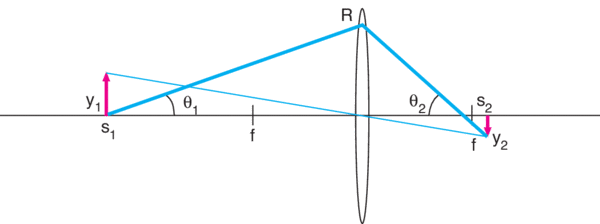Why can a lens not focus an electric lamp's illumination to a much smaller area than the area of the lens, as it apparently can do with sunlight?
A lens can "intensify" sunlight via focusing it to a much smaller area ( causing a spot of concentrated heat ) than the area of the lens. But this is not similarly possible when the light source is electrical, as my own experiments with either a magnifying glass or a fresnel lens have both failed to demonstrate.
Note also that the lens of a movie projector doesn't seem to focus the lamp light smaller, at any distance from the lens. However, it's able to merely inhibit the spreading of illumination; i.e. within a movie theater it limits the maximum spread of the projector's light to the perimeter of the display screen.
An incandescent bulb having a clear ( non-coated with white diffuser ) glass globe is a reasonable single point source of light for comparison to the sun. These are found in movie projectors and are also marketed for use with vanity mirrors.
I merely wish to shrink the visible illumination from a lamp to a much smaller, brighter spot than the area of that light source. I'm not trying to generate heat.
Similar questions have already been thoroughly answered, albeit unsatisfactory, often digressing to thermodynamics. Have the answerers missed the point ? Surely the correct explanation must be simpler, no?

